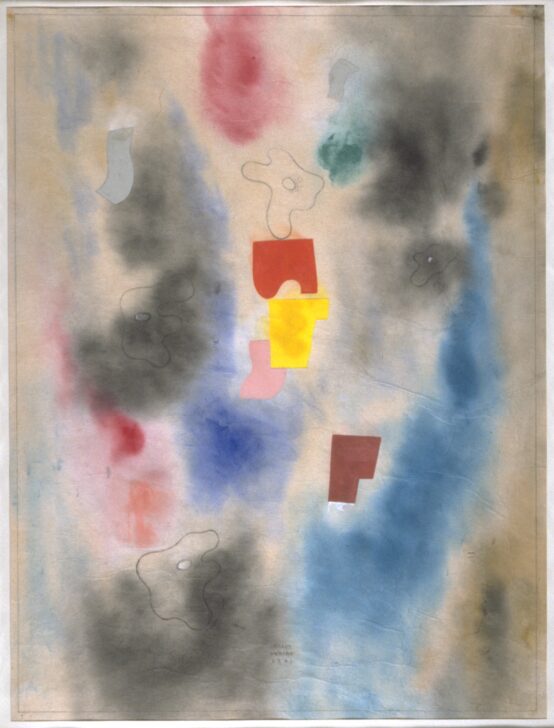Tarascan Recollections
Carlos Mérida

Description
Subject Matter:
This painting typifies Mérida's Pan-American Surrealist style. Guatemalan, of Mayan descent, he moved to Mexico in 1919, after traveling to Paris, and began to see pre-Columbian art as a source for inspiration. Unlike many of his contemporary so-called "Mexican School" artists, like Diego Rivera, he did not merely want to replicate pre-Columbian motifs and aesthetics, but instead use the art of the indigenous peoples of the Americas as a way to connect to the past metaphysically rather than pictorially.
The title of the work refers to the peoples and the pre-Columbian state of Tarascan, which was contemporary to the Aztec Empire but was never conquered. Mérida claimed that Tarascan sculpture included an important source of inspiration for this Surrealist works because it allowed him to engage with his own Mayan heritage without involving indigenism.
Physical Description:
This vertically oriented rectangular watercolor shows splotches of blue, teal, green, and red. There are four amoeba-shaped forms in graphite and six collaged forms in red, yellow, pink, brown and two in grey. There is a border in graphite and a signature and date at the bottom center.
Usage Rights:
If you are interested in using an image for a publication, please visit https://umma.umich.edu/request-image/ for more information and to fill out the online Image Rights and Reproductions Request Form.